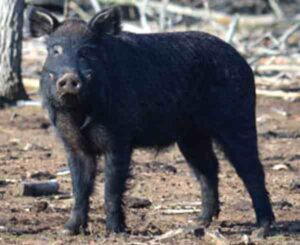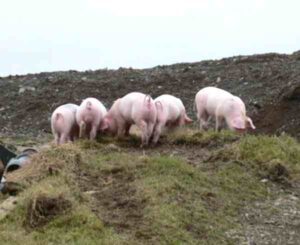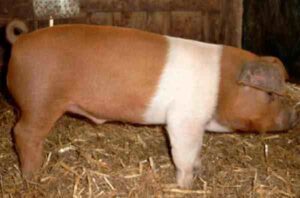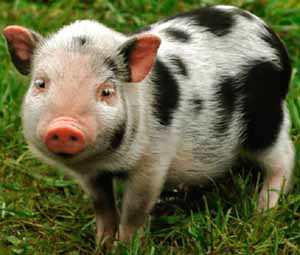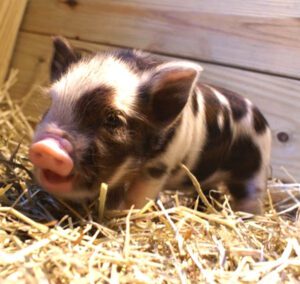The Mulefoot pig is a rare breed of domestic pig which is used for it’s lean meat. It is from Spain and named for it’s intact, uncloven hooves reminiscent of a mule.
Such characteristics will occasionally occur as a single gene mutation, producing occasional “mulefooted” pigs within a variety of other breeds.
Exact origins of the Mulefoot pig are unknown. But it likely originated with the pigs brought to the Gulf Coast by the Spanish. Pigs with single hooves are found in writings as far back as Aristotle.
But the Mulefoot pig is the only pig population to be considered as a breed with an established standard type and extensive agricultural usages.
The breed may share a similar ancestry to the Choctaw pig and is possibly related to it. Total population of the breed began to decline in the mid-20th century. One breeder R.M Holiday of Louisiana, Missouri established what would become the last herd of purebred Mulefoot pig by 1964.
He used selective breeding for maintaining the breed standard and acquired stock from all known purebred breeders. Registries for the breed closed by 1976 and the herdbooks, pedigrees and other registration information was lost.
For re-establishing the breed registry and expanding breeding programs to additional farms, the American Livestock Breeds Conservancy and Mark Fields began working in 1993. Read more information about the breed below.
Mulefoot Pig Characteristics
Mulefoot pig is a medium sized animal. It is typically black in color, with rarely having white markings over their body. Some pigs have wattles on either side of the neck, but it’s not common. Their ears are usually picked forward.
Average body weight of the mature Mulefoot boars is around 250 kg. And the mature sows on average weight around 200 kg. [1]
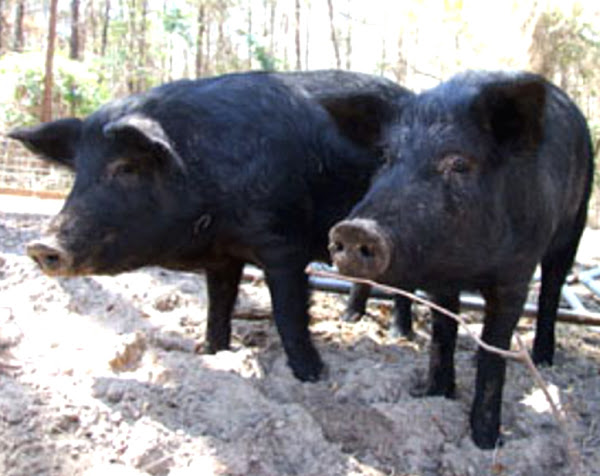
Uses
Mulefoot pigs are raised primarily for meat, but they can also be used for their lard (a high-quality cooking fat). The meat of Mulefoot pigs is marbled and flavorful, and is prized by chefs and foodies.
Special Notes
The Mulefoot pig is very hardy and actually well known for it’s hardiness. It can thrive well when raised on pasture or kept in free range pig farming system.
It is an excellent forager and has retained the ability to forage for food very well. The sows are excellent mothers, having litters that average 5-6 piglets.
The breed is not immune to hog cholera, although many breeders originally claimed. The animals are usually active and have a relatively docile temperament.
The Livestock Conservancy considers the breed to be critically endangered, as of 2013. Review full breed profile of the Mulefoot pig in the following chart.
| Breed Name | Mulefoot Pig | |
| Other Name | None | |
| Special Notes | Very hardy, active, docile temperament, good for extensive farming, excellent foragers, sows are good mothers, litters averaging 5 to 6 piglets | |
| Breed Size | Medium | |
| Boars | Around 250 kg | |
| Sows | Around 200 kg | |
| Climate Tolerance | Native climates | |
| Color | Mainly black, sometimes with white markings | |
| Rarity | Rare | |
| Country/Place of Origin | Spain |


